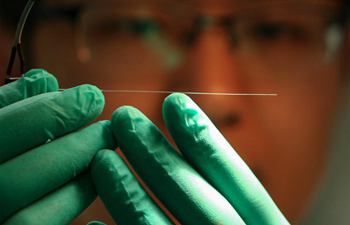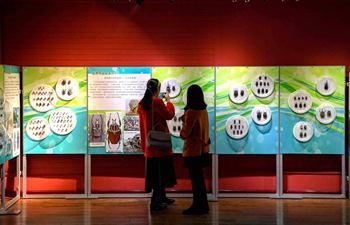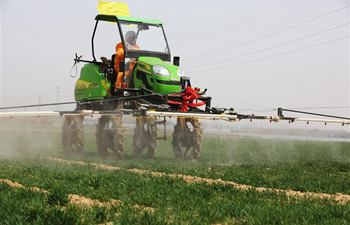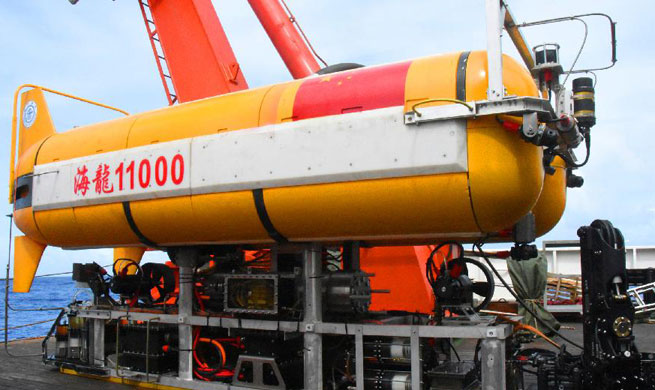WASHINGTON, March 30 (Xinhua) -- A slippery rough surface (SRS) inspired by both pitcher plants and rice leaves outperforms liquid-repellent surfaces in water harvesting applications, according to a team of researchers at Penn State and the University of Texas at Dallas.
The team reports their work Friday in Science Advances, an open-access journal.
Many water-harvesting technologies are not as efficient, because when water is attracted to a hydrophilic surface, the water tends to form a sheet and clings to the surface, making it hard to remove.
Therefore, the researchers are looking at combining different biological strategies to create a slippery solution for water harvesting.
"With SRS, we combined the slippery interface of a pitcher plant with the surface architecture of a rice leaf, which has micro/nanoscale directional grooves on its surface that allows water to be removed very easily in one direction but not the other," Simon Dai, assistant professor in the University of Texas, Dallas, told Xinhua.
Dai's team developed a pitcher plant-inspired slippery surface with hydrophilic chemistry. At the same time, he added the directional grooves and gave the new surface a micro-scale roughness that increased the surface area. The rate of water and fog harvesting are directly proportional to the amount of surface area on which droplets can form.
Then, the rice leaf-inspired grooves whisk the water droplets away through capillary action or gravity.
The team showed that these surfaces can collect tiny water droplets from air at a rate faster than many state-of-the-art surfaces.
"If the SRS material is produced at scale, we estimate that we can collect over 120 liters of water per square meter of the surface per day, and we can further increase the water harvesting rate by optimizing the SRS," said Sun Nan, a co-author of the paper.
"With an estimated 4 billion people living in a situation of water scarcity during at least some part of the year, an inexpensive method for harvesting water from water vapor or from fog droplets in air could have enormous practical applications," said the project's leader, Tak-Sing Wong, assistant professor of mechanical engineering at Penn State University.
They are currently working on optimizing and scaling up the SRS with the goal to create highly efficient water harvesting systems for providing clean water in water scarcity regions.

















